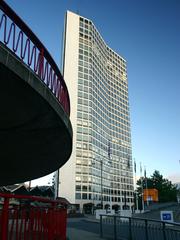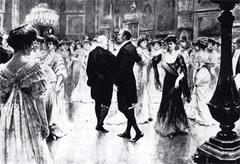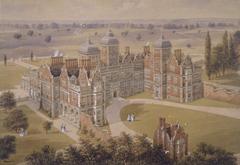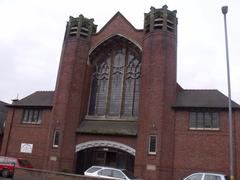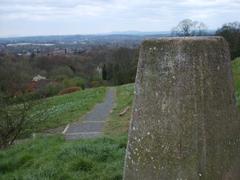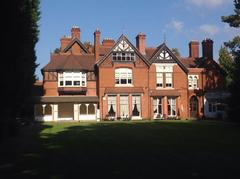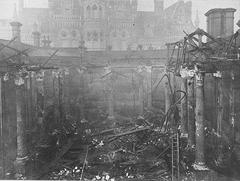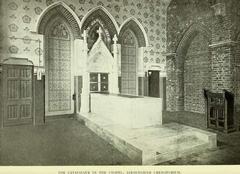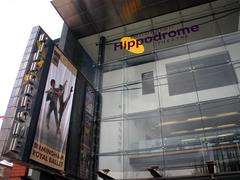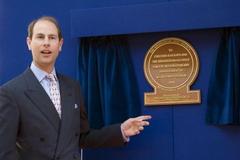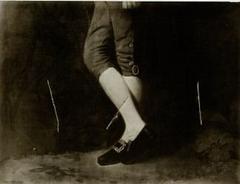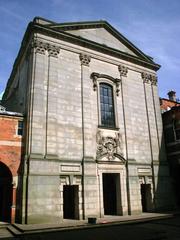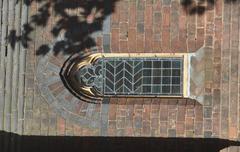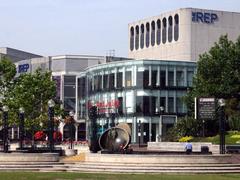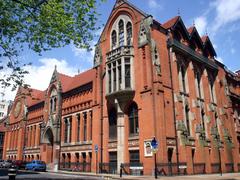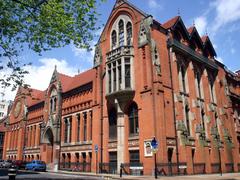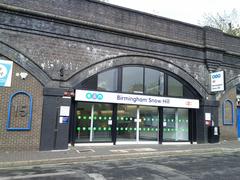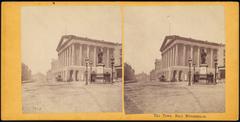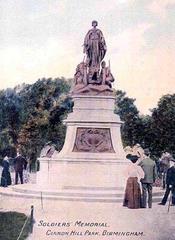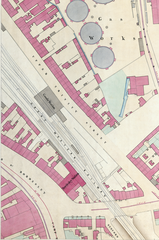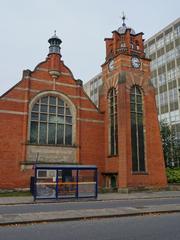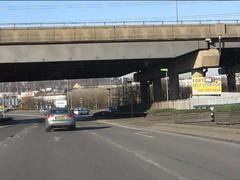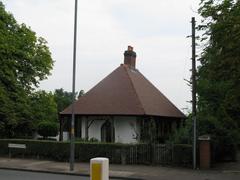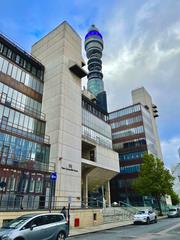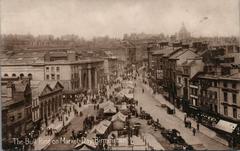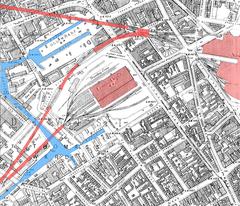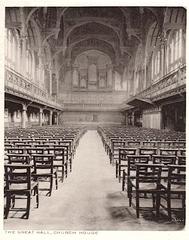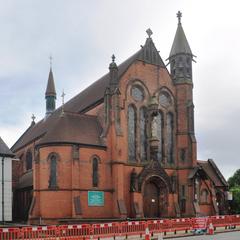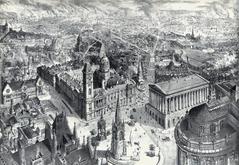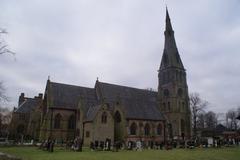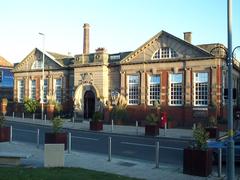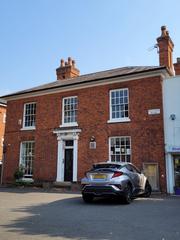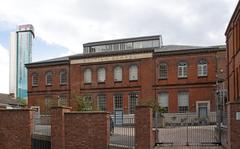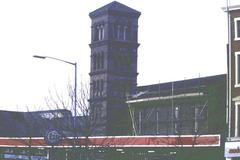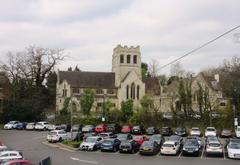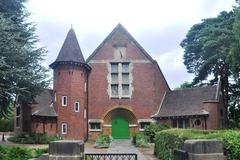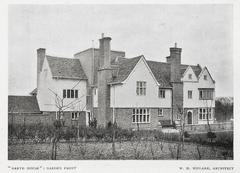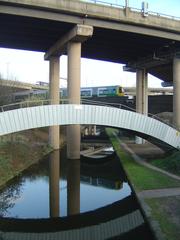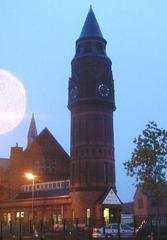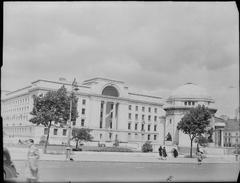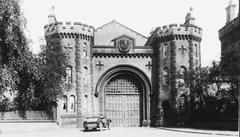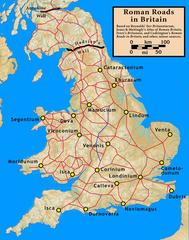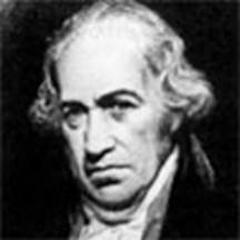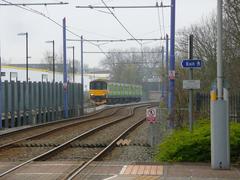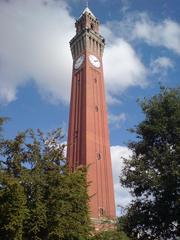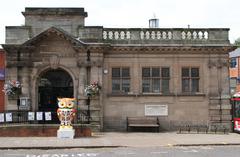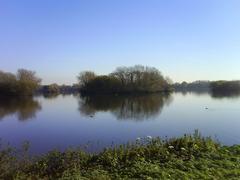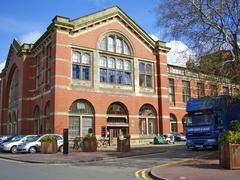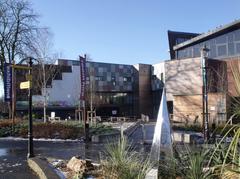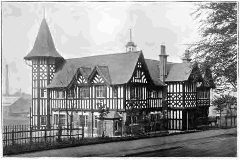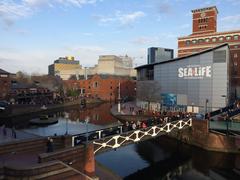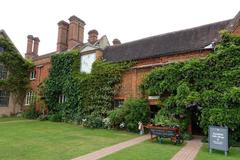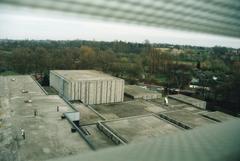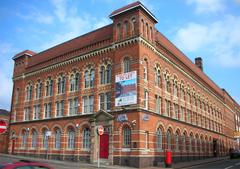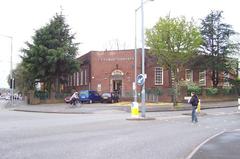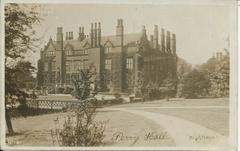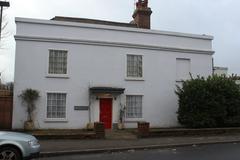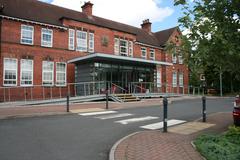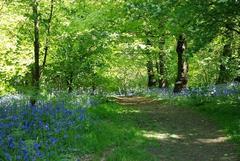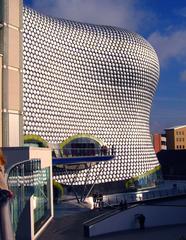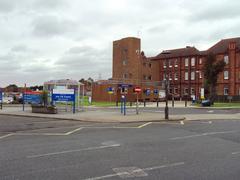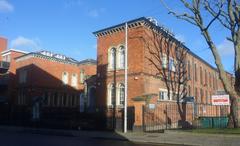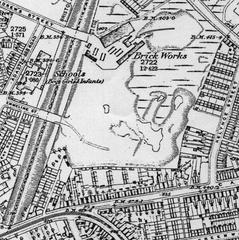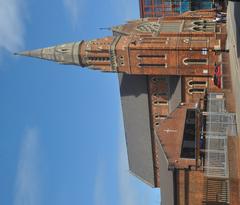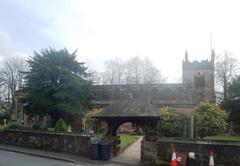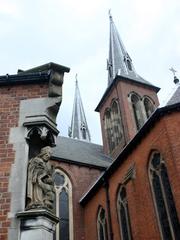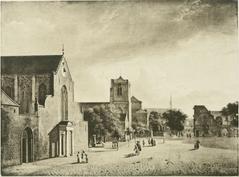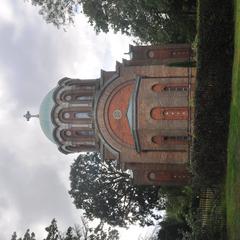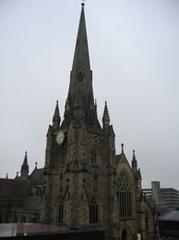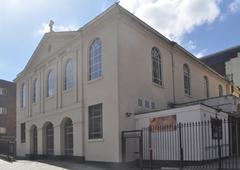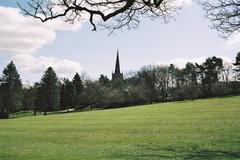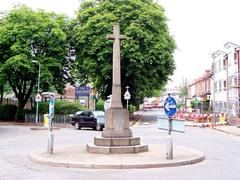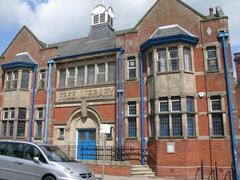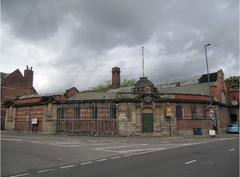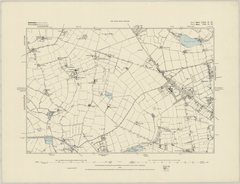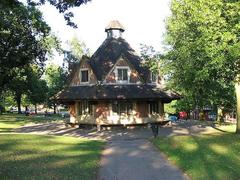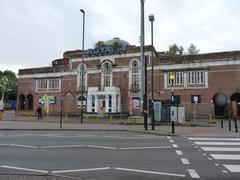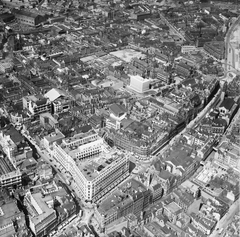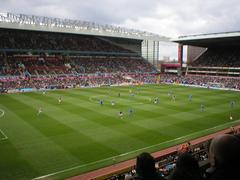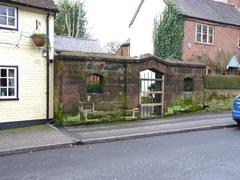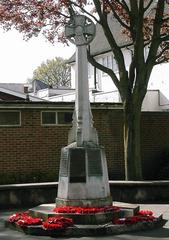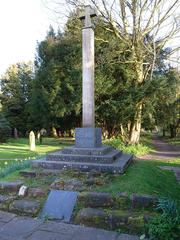The Round House Birmingham: Visiting Hours, Tickets, and Historical Significance
Date: 14/06/2025
Introduction
The Round House Birmingham is an exceptional Grade II* listed site, embodying the city’s dynamic interplay between its Victorian industrial past and contemporary cultural vibrancy. Originally constructed in 1874, this horseshoe-shaped landmark served as stables and stores for Birmingham Corporation’s Public Works Department, supporting horse-drawn municipal operations during a period of explosive urban and industrial growth. Today, following a comprehensive restoration, the Round House stands as both a monument to Birmingham’s heritage and a welcoming hub for community engagement, learning, and leisure. This guide provides detailed, up-to-date information on visiting hours, tickets, accessibility, and the historical significance of the Round House, ensuring you make the most of your visit to this Birmingham icon (Roundhouse Birmingham; Birmingham Heritage; Canal & River Trust).
Table of Contents
- Introduction
- Historical Background
- Visitor Information
- Frequently Asked Questions (FAQs)
- Visuals and Media
- Internal Links
- Conclusion
- References
Historical Background
Origins and Construction
Commissioned by the Corporation of Birmingham and designed by local architect W.H. Ward, the Round House was built in 1874 to support the city’s rapidly expanding public works. Strategically sited between the London North Western Railway and the Birmingham Canal, its innovative horseshoe shape maximized operational efficiency, allowing easy movement for horses, carts, and staff. The building featured secure internal storage and a lower-level yard connected by ramps, facilitating the effective management of municipal supplies (Roundhouse Birmingham; Birmingham Heritage; Canal & River Trust).
Architectural Features and Significance
The Round House stands out for its rare crescent shape, robust red brick construction, and preserved Victorian details. The central courtyard, flanked by stables, storage rooms, and workshops, was designed for both security and operational ease. Architectural highlights include original stable doors, ironwork, cobbled surfaces, brick vaulting, and arched entrances. The building’s Grade II* listing recognizes its exceptional historical and architectural value (BFF Architects; Heritage Fund).
Evolution, Decline, and Restoration
The Round House served as a key municipal depot for over a century, adapting to the city’s changing needs. As horse-drawn transport declined, the building fell into redundancy in the 1980s and suffered neglect. Recognizing its significance, British Waterways (now Canal & River Trust) acquired the site in 2001, and the building was added to the Heritage at Risk register (Heritage Fund). A major restoration partnership between the Canal & River Trust and National Trust, supported by the National Lottery Heritage Fund, began in 2017. Restoration from 2019–2021 included structural repairs, accessibility upgrades, and the sensitive integration of modern amenities (BFF Architects; Roundhouse Birmingham).
Community Role and Impact
Since reopening in 2021, the Round House has evolved into a vibrant community and visitor hub. Managed by a dedicated charity, it offers a diverse program of tours, outdoor activities, exhibitions, and rentable spaces for local enterprises. The site has welcomed thousands of visitors and supported small businesses, making it a cornerstone of Birmingham’s heritage tourism and community life (Heritage Fund; Wikipedia).
Place in Birmingham’s Industrial Heritage
The Round House is a living testament to Birmingham’s Victorian era, reflecting the city’s rapid growth and innovation. Its location near key canal and railway networks highlights its integral role in the urban infrastructure of the time. Unlike the demolished Curzon Street Roundhouse, the Sheepcote Street Round House survives as a rare example of municipal, rather than railway, architecture (Historic England).
Key Dates and Milestones
- 1874: Construction completed (Roundhouse Birmingham)
- 1980s: Ceased municipal use, became redundant (Wikipedia)
- 2001: Acquired by British Waterways
- 2013: Restoration initiative launched
- 2017: National Lottery Heritage Fund grant awarded
- 2019–2021: Major restoration works
- 2021: Official reopening and removal from Heritage at Risk Register (Heritage Fund)
Visitor Information
Visiting Hours
- General Hours: 9:30am–4:30pm, Wednesday through Sunday
- Closed: Mondays, Tuesdays, and major holidays (including Christmas and New Year; closed 21 December 2025 – 8 January 2026)
- Quiet Times: 9:30–10:00am, Wednesday to Sunday (calm, sensory-friendly environment)
- Updates: Hours may change for special events or maintenance. Always check the official website before visiting.
Tickets and Pricing
- General Admission: Free (no booking required)
- Guided Tours and Activities: Temporarily paused as of June 2025 due to funding (Birmingham Mail). When operational, tours (walking, kayaking, paddleboarding) require tickets, bookable online.
- Special Events: Some workshops or pop-up events may have fees and require advance booking.
Accessibility
- Wheelchair Access: Most areas are step-free; accessible toilets and baby changing available.
- Assistance Dogs: Welcome.
- Facilities: Five public toilets (one fully accessible), baby changing, pushchair-friendly routes.
- Support: For specific needs, call 0121 716 4077 in advance.
Getting There
- Address: 1 Sheepcote Street, Birmingham, B16 8AE, England
- Public Transport:
- Birmingham New Street and Snow Hill stations within walking distance
- Multiple bus and tram routes serve the area
- Cycling: Bike racks available
- Parking: No on-site parking; use nearby public car parks
- Navigation: What3Words: perky.palm.exact (Roundhouse Birmingham - Contact)
Nearby Attractions
- Birmingham Canal Navigations: Explore the canal network on foot or by bike
- The Coffin Works: Museum of Birmingham’s coffin-making heritage
- Jewellery Quarter: Renowned for historic workshops and artisans
- Library of Birmingham and Brindleyplace: Modern and historical attractions nearby
Special Events and Guided Tours
- Currently Paused: All guided tours (building, canal kayak, walking) and the Visitor Centre are paused as of June 2025.
- Self-Guided Trails: Free printed trails and downloadable audio tours are available.
- Events: Pop-up exhibitions, performances, and workshops occur throughout the year; check the website for updates.
Photographic Opportunities
The Round House’s unique horseshoe architecture, cobbled courtyard, and canal-side setting provide outstanding photo opportunities—especially in early morning or late afternoon light.
Frequently Asked Questions (FAQs)
Q: What are the Round House Birmingham visiting hours?
A: 9:30am–4:30pm, Wednesday to Sunday. Closed on Mondays, Tuesdays, and major holidays.
Q: Do I need a ticket to visit?
A: No, general entry is free. Paid tickets are only needed for guided tours or special events (currently paused).
Q: Is the Round House accessible for wheelchair users?
A: Yes, most areas are wheelchair accessible; accessible toilets are available.
Q: Can I bring my dog?
A: Assistance dogs are welcome; well-behaved pets may be permitted—check ahead.
Q: Is food available on-site?
A: Yes, Ristorante Café Arena offers Italian dining; picnic benches are available. The Distillery next door provides additional food options.
Q: Is there parking available?
A: No on-site parking. Use nearby public car parks or public transport.
Q: Are guided tours available?
A: All guided tours are paused as of June 2025; check the official website for updates.
Visuals and Media
- High-quality images of the Round House’s exterior, courtyard, and interior spaces (alt: “Round House Birmingham historical building exterior”).
- Photos of the Ristorante Café Arena and canal-side views (alt: “Dining at Round House Birmingham Italian café”).
- Interactive maps and virtual tour links, if available, for pre-visit exploration.
Internal Links
- Explore more: Roundhouse Birmingham Visitor Guide
Conclusion
The Round House Birmingham is a shining example of heritage preservation and adaptive reuse, bridging its Victorian origins with a dynamic present-day community role. Visitors enjoy free access to the building, exhibitions, and canal-side setting, with accessible amenities for families and those with additional needs. While all guided tours and the Visitor Centre are paused as of June 2025, the site remains open for self-guided exploration, photography, and relaxation. For the latest visiting hours, ticketing information, and event updates, consult the official Round House website. Enhance your experience by downloading the Audiala app for audio tours and following the Round House on social media. Discover Birmingham’s rich industrial heritage—plan your visit today.
References
- Roundhouse Birmingham
- Birmingham Heritage
- Canal & River Trust
- Heritage Fund
- BFF Architects
- Visit Birmingham
- Birmingham Mail
- Wikipedia
- Architecture Lab
- National Geographic
- What’s On Live
- Day Out With The Kids


